The Samsung Galaxy S9 and S9+ Review: Exynos and Snapdragon at 960fps
by Andrei Frumusanu on March 26, 2018 10:00 AM ESTThe Snapdragon 845 - A Quick Recap
Starting with Qualcomm's Snapdragon 845 – we already extensively covered during the December launch announcement as well as Qualcomm’s traditional performance preview most recently in February.
| Qualcomm Snapdragon 845 vs 835 | |||
| SoC | Snapdragon 845 | Snapdragon 835 | |
| CPU | 4x Kryo 385 Gold (A75 derivative) @ 2.8GHz 4x256KB L2 4x Kryo 385 Silver (A55 derivative) @ 1.77GHz 4x128KB L2 2MB L3 @ 1478MHz |
4x Kryo 280 Gold (A73 derivative) @ 2.45GHz 2MB L2 4x Kryo 280 Silver (A53 derivative) @ 1.90GHz 1MB L2 |
|
| GPU | Adreno 630 @ 710MHz | Adreno 540 @ 670/710MHz | |
| Memory | 4x 16-bit CH @ 1866MHz LPDDR4x 29.9GB/s 3MB system cache |
4x 16-bit CH @ 1866MHz LPDDR4x 29.9GB/s |
|
| ISP/Camera | Dual 14-bit Spectra 280 ISP 1x 32MP or 2x 16MP |
Dual 14-bit Spectra 180 ISP 1x 32MP or 2x 16MP |
|
| Encode/ Decode |
2160p60 10-bit H.265 720p480 |
2160p30 (2160p60 decode), 1080p120 H.264 & H.265 |
|
| Integrated Modem | Snapdragon X20 LTE (Category 18/13) DL = 1200Mbps 5x20MHz CA, 256-QAM UL = 150Mbps 2x20MHz CA, 64-QAM |
Snapdragon X16 LTE (Category 16/13) DL = 1000Mbps 3x20MHz CA, 256-QAM UL = 150Mbps 2x20MHz CA, 64-QAM |
|
| Mfc. Process | 10nm LPP | 10nm LPE | |
The Snapdragon 845 is the first SoC to adopt ARM’s new DynamIQ CPU topology and cores. The new configuration includes a larger coherent cluster instead of separate clusters for the little and big cores. While this new configuration allows for better performance and core configuration scaling, Qualcomm opted to continue the traditional 4+4 CPU set that we’ve seen with the Snapdragon 835. The performance core comprise of the Kryo 385 Gold cores which are derivative of ARM’s Cortex-A75’s and are running at up to 2803MHz. The efficiency cores are the Kryo 385 Silver cores which are based on ARM Cortex-A55’s and are running at up to 1766MHz.
Among the big improvements of the Snapdragon 845 includes the introduction of the new X20 modem which supports LTE UE Category up to 18 in the downstream and Category 13 in the upstream.
The Snapdragon 845 is also the first SoC from Qualcomm to adopt the new in-house designed Adreno 630 which marks a generational leap in the graphics department. I can confirm that Qualcomm continues the trend of trying to maintain clock frequencies between generations and the Adreno 630 in the Galaxy S9 comes in at 710MHz – a bump from the 670MHz in the Galaxy S8 but the same as other Snapdragon 835 devices. We’ll be having a more in-depth evaluation of the new Adreno in the GPU part of the review later on.
Unique for Android SoCs is also the first time introduction of a new system wide “L4” cache 3MB in size which is meant to reduce system memory access not only from the CPUs but also every other IP block in the SoC, thus gaining power efficiency.

Snapdragon 845 Floor Plan. Image Credit TechInsights
Our friends at TechInsights this week were able to publish a die shot of the Snapdragon 845, and it’s interesting to see the changes compared to the Snapdragon 835. Because the Snapdragon 845 is manufactured on Samsung’s 10LPP process, there aren’t any new density improvements over last year’s 10LPE Snapdragon 835. Naturally because the new SoC includes new IP and improvements, die size has increased from 72.3mm² to around 94mm².
The biggest contributor of this increase will be the new system cache, which is part of the area that TechInsights (erroneously in my belief) marked as the DSP. Here we four new blocks to what I think are simply four banks of SRAM and their arbitration logic and their responsibility is divided among the four memory controller channels.
On the CPU side we see the new DSU lying in-between the A55 cores with the A75 cores spread around the little cores and the DSU. The 2MB L3 cache a big unified block alongside the DSU and little cores. Based on TechInsights preliminary low-res picture, the CPU complex comes in at 11.39mm² with an A75+L2 core coming in at 1.57mm² and the A55+L2 coming in at ~0.53mm².
The Adreno 630 seems to have consolidated a lot of its inner components. We still see a clear 4-shader core arrangement, however instead of having one adjacent block next each shader core we now see a larger block shared among two shader cores. The shader cores are also vastly improved as they have doubled the ALU pipelines. On the die shot it looks like the GPU actually only has 2 separate units, and this is confirmed by the drivers of the Snapdragon 845: instead of a quad-core Adreno 540, the Adreno 630 is a dual-core GPU. The texture units/ROPs/GMEM blocks have also been consolidated from four units down to two larger blocks, with a 50% increase in texture throughput. Overall there’s been extensive rework throughout the GPU resulting in a “simplified” configuration that seems to be forward-looking in terms of future scalability. Qualcomm has also achieved this in a mere ~10.69mm², making the Adreno 630 the by far smallest high-end GPU in the mobile space by a significant margin.
In terms of CPU performance, the new Kryo 385 Gold cores shouldn’t veer off much from ARM’s Cortex A75 microarchitecture. We’ve extensively covered the improvements in last year’s Tech Day reveal article. Overall the Cortex A75 is a strong successor to the A73 but refines the microarchitecture in terms of memory performance and especially floating point performance.
Following the performance preview of the Snapdragon 845 in February I noted that I was a bit disappointed in the end-performance of the CPUs as they did not reach ARM’s quoted performance targets. I want to revisit this a bit attempt to try to explain the different factors that lead to it.
Firstly ARM’s performance figures were projected on a configuration of A75 coupled with 512KB L2 caches. Qualcomm opted to use 256KB caches which may account for a few percentages in performance.
The new memory subsystem of the Snapdragon 845 also isn’t without faults: the initial increased DRAM memory latency that we measured on Qualcomm’s QRD845 reference platform is definitely carrying over to retail consumer devices, as the Galaxy S9 exhibits the same behaviour. This is quite a disappointing characteristic to find as it will counteract a lot of performance gains – especially in memory latency sensitive workloads – which we’ll confirm later on in the SPEC benchmarking portion.
Finally, one big question that Qualcomm teased about in its announcement event, is the configuration of the DSU. Qualcomm explained that the CPU complex was powered by three voltage planes – and I can confirm that my initial assessment was correct as two frequency and voltage planes power the little and big cores, and the third voltage plane powers the DSU/L3 and the cDSP (On of the various DSPs). The frequency here tops out at 1478MHz which is a tad lower than I had expected.
When reading ARM’s TRM (Technican Reference Manual) of the DSU, we see one particular claim regarding the recommended clocks of the L3 in relation to the CPU clocks:
"SCLK frequency affects the L3 hit latency and, therefore, it is important for achieving good performance. For best performance, ARM recommends running SCLK as close to CORECLK[CN:0] frequency as possible. However to reduce dynamic and leakage power, targeting a lower frequency might be required. Running SCLK at least approximately 75% of the CORECLK[CN:0] frequency might give an appropriate balance for many systems."
The Snapdragon’s big cores run at up to 2803MHz so running the L3 at up to only 1478MHz represents only 52% of the peak frequency. We’re not able to judge what kind of performance impact Qualcomm’s configuration has, but it looks like there will be some sort of degradation compared to an optimally run system.
All in all – the reduced 256KB cache, DRAM memory latency degradation as well as the more conservative maximum frequency of the L3 all can add up and may explain why the Snapdragon 845 wasn’t able to quite reach ARM’s projections on performance of the new core.
In general the Snapdragon 845 looks like a great SoC on paper – there should be good CPU improvements as well as excellent GPU leaps, but that’s no news given that we knew that from the performance preview. The only remaining question is power efficiency, which we’ll be looking at shortly after we cover the competition’s SoC.


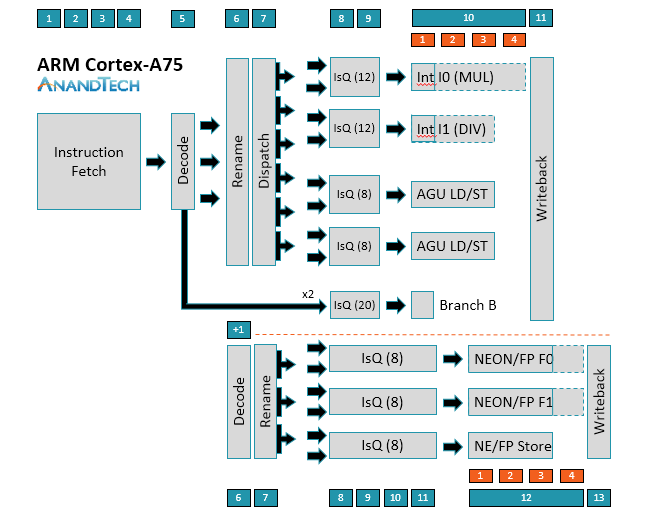
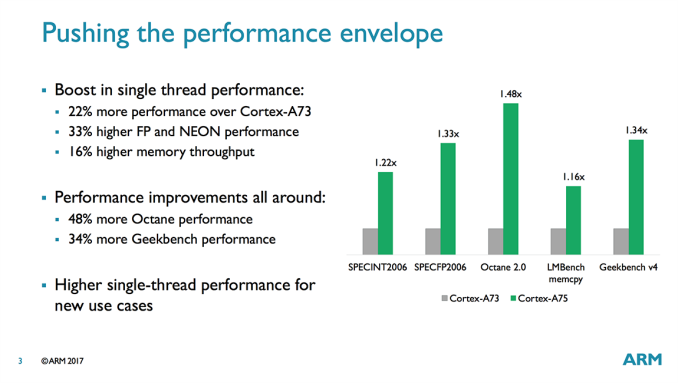
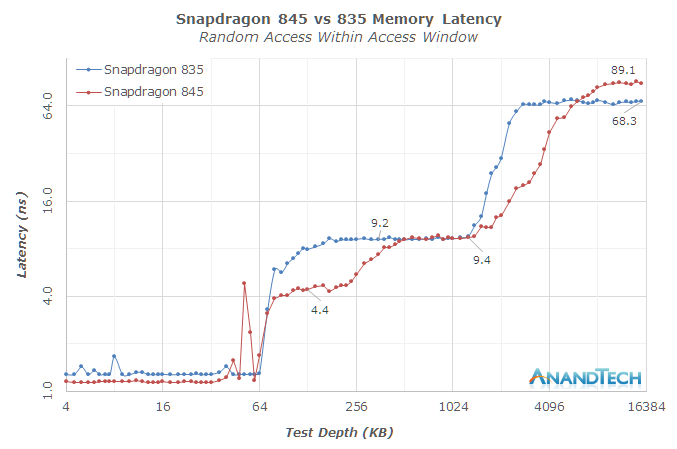
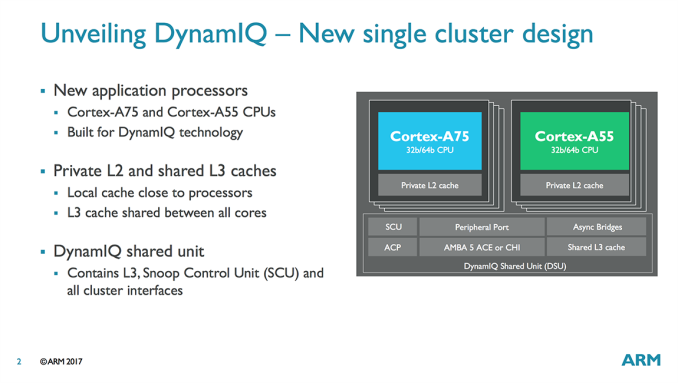
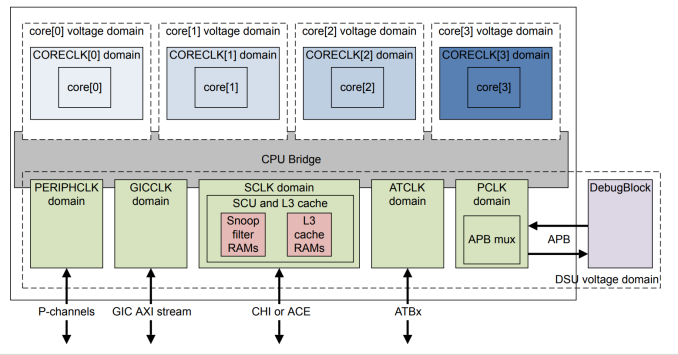








190 Comments
View All Comments
id4andrei - Tuesday, March 27, 2018 - link
All reviewers go gaga for geekbench scores with iphones/ipads as well. In this case the GB scores prove that at least in chip design Samsung has made a huge leap. As the review has outlined, the problem lies with the scheduler and DVFS which Samsung can and should address.If "Samdung" is so bad at hardware design, how do you call Apple's high priced iphones of the last 3 years that could not sustain chip performance and had to be throttled so as to not crap out. All initial reviews were glowing but they were all impervious to the impeding throttling.
name99 - Tuesday, March 27, 2018 - link
Dude, you really do yourself no favors by struggling so hard to criticize Apple.Apple's throttling has NOTHING to do with the CPU per se (ie the CPU is not generating excessive heat beyond spec, or because it has been running too fast for too long), it has to do with the BATTERY and with a concern that, if CPU performance were to spike the battery could not supply enough current.
Very different problem, nothing to do with the CPU design. A real problem yes but totally irrelevant to the issues being discussed here.
Matt Humrick - Wednesday, March 28, 2018 - link
Apple's big CPU and GPU are susceptible to thermal throttling when running sustained workloads too.Also, having to throttle a processor within a year of sale because its transient current requirements overwhelm the power delivery system is most definitely a design flaw.
Icehawk - Friday, April 6, 2018 - link
My wife’s 6S is still working at 100% after several years, I get the feeling the amount of people affected is overblown as pretty much anything anti-Apple is. I do think Apple needs to look at a better way of dealing with this but it’s also not the armeggedon somemake it out to be. I am far from a Apple fanboy but I do like their iOS products but I am sure someone will make a retort of that nature. I’d say the same thing about the Samsung chip - not great but it is performant, perhaps if we stop thinking each year a new phone should blow us away it would help us be more realistic.Lavkesh - Tuesday, March 27, 2018 - link
"In this case the GB scores prove that at least in chip design Samsung has made a huge leap" - Please explain huge leap here? The new chip barely outperforms the older SOC.ZolaIII - Monday, March 26, 2018 - link
I am very disappointed with both SoC's. Qualcomm wasted so much space on bad L4 cache which only added to latency & generally wasted more. The 30% is enormous even if new A75 cores are 35% bigger (would be 50% with ARM's L2 reference cache size) I don't know about A630 vs A540 size but if it grown-up let's say 10% the cores & GPU would together accommodate for around 15~20% leaving L3 & L4 responsible for the rest. Would be much better they used it for GPU as it could had been 2x the size then. I am also very disappointed with new cache hierarchy as it turns out to be stupid and a waist of silicone. Seams to me neither SoC used good scheduler nor scheduling by the looks of things it seems Samsung used the CAF HPM sched settings for Snapdragon SoC very aggressive patched interactive without any restraints whatsoever & no hotplug whatsoever which is very south from optimal, reference QC platform seams to had at least used hotplug (as their is no other way to explain the difference of almost 1W in GPU testing as two vs four A75's active). On the other hand seems Samsung used Power aware schaduler instead HPM & very granulated hotplug producing very bad results as those are directly confronted two things & when splashed together can only result in catastrophic result. I prefer HPM configured to be used with limited task packing and a high priority tasks enabled with significant increase of time interval for it (so that it can skip CPU sched limit), for CPU sched interactive traditional not patched with tree step load limitations (idle so that it doesn't jump erratic on any back shade task, ideal that is considered as best sustainable leakage for given lithography & max sustainable for two core's [only on big cores] i also use boost enabled & set to ideal frequency one [same as in interactive]). Preferred to use core_ctl hotplug disabled for the two little & two big cores so that they never get switched off from it. I won't go further in details about it hire as its pointless. I find this idea balanced between always available/needed/total performance as most of the times two of each course are enough for most of tasks & if not it's not a biggie to wait for other two to kick in. There is a minor drow back in responsiveness on lite task's but actually it works as fast as possible on hard one's flagged as heavy tasks like for instance Chrome rendering. It's also very beneficial to GPU workloads where even switching of two little core's and giving even 100~150mv headroom to GPU means much.Sorry for getting a bit deep regarding how complete scheduling mechanism should be done but I had an urge to explain how it should be done as it's so terrible done in the both cases examined hire.
tuxRoller - Wednesday, March 28, 2018 - link
It's not at all clear that the hpm is meaningfully better (much faster or much more power efficient) than a proper schedtune + energy model implementation.Scheduling is just ridiculously hard. Adding the constraints of: soft-realtime requirements, minimal battery usage, AND an asmp and you've got the current situation where there's not yet a consensus design. We are, however, starting to see signs of convergence, imho.
zeeBomb - Monday, March 26, 2018 - link
I came...and I finally sawphoenix_rizzen - Monday, March 26, 2018 - link
Ouch. The Exynos S9 is just barely better than the Exynos S7. :( And that's what Canada's going to get.Here's hoping they can improve things via software updates. Was considering the S9 to replace the wife's now dead S6. She's been using my S7 for the past two months while I limp along with a cracked-screen Note4. Other than the camera and screen, this isn't looking like much or an upgrade for being two generations newer.
Maybe we'll give the ZTE, Huawei, and Xiaomi phones another look ...
mlauzon76 - Monday, March 26, 2018 - link
Samsung Exynos 9810 (Europe & Rest of World)Canada is the 'rest of [the] world', but we don't get that version, we never get anything with the Exynos processor, we get the following one:
Qualcomm Snapdragon 845 (US, China, Japan)